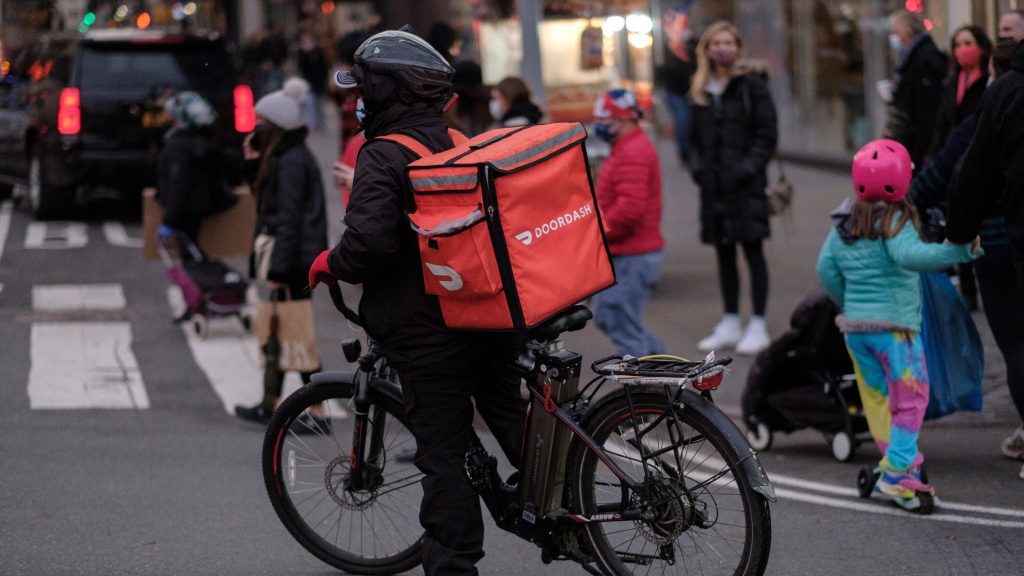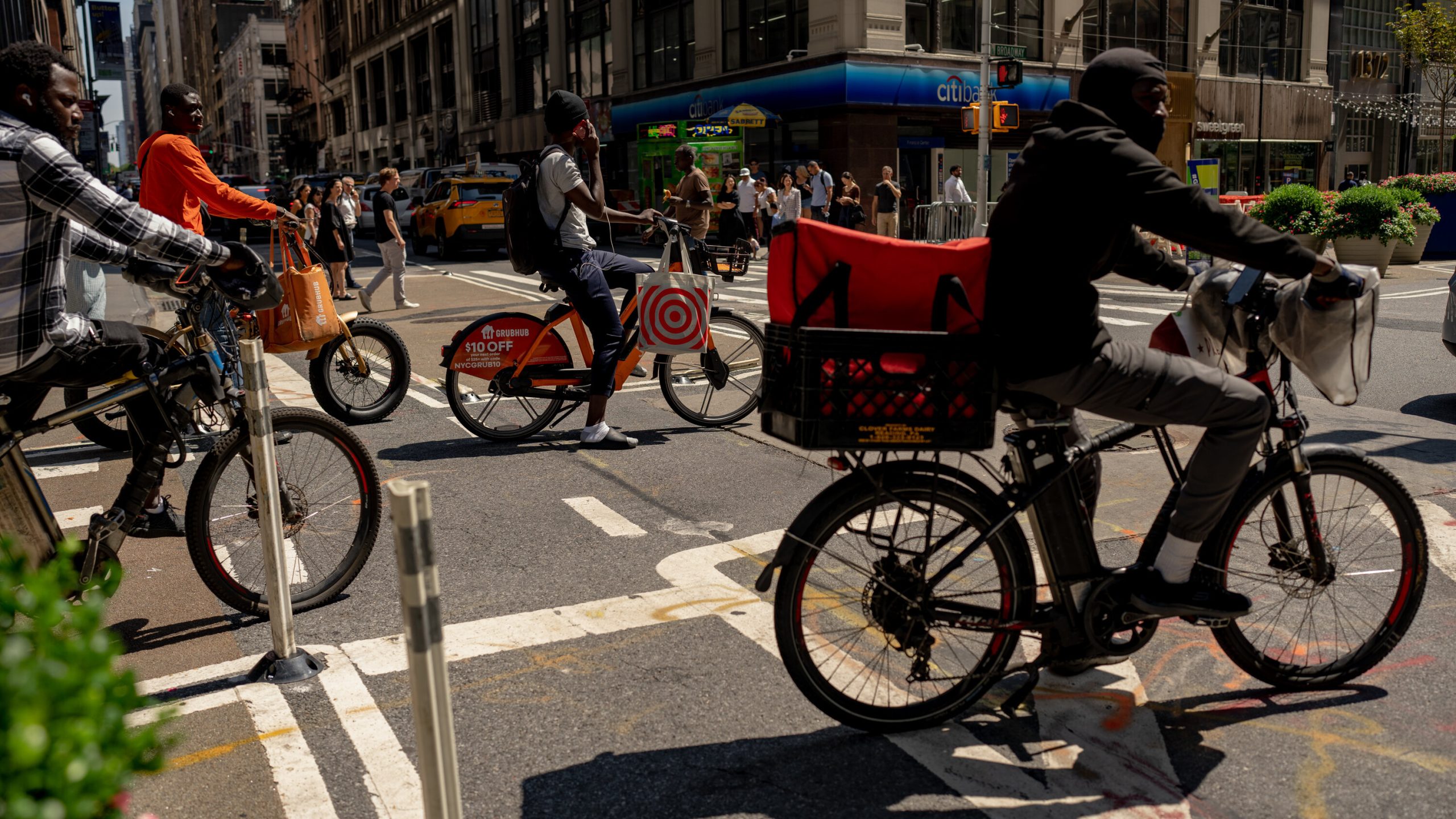The recent minimum wage raise has reduced hours and tips for New York City food delivery workers.

Photo from Google
Minimum Wage Increase Impacts Tips for Food Delivery Drivers in NYC
Since December 4, the minimum wage has been $17.96 per hour, increasing DoorDash, Grubhub, and UberEats delivery drivers’ take-home compensation. According to Bloomberg-reviewed pay stubs, drivers’ tips have dropped from a large chunk of their revenue to 5% to 15%.
A city analysis said delivery workers made $11.12 with tips and $4.03 without tips before the minimum wage increase. One reason for the drop in tips is because delivery apps now allow tipping only after customers pay for their items, instead of during checkout.
A new scheduling mechanism from Uber will reduce the number of couriers authorized to work every day next month. As app businesses cut payroll costs, this change from a fee-per-trip to an hourly compensation reduces drivers. Couriers cannot go online at will under the new system, which limits the number per hour.
READ ALSO:DoorDash says not tipping drivers may result in longer wait for food
Uber Charges $2, DoorDash to Increase Customer Costs
Uber now charges $2 for all deliveries to cover payroll costs. DoorDash plans to boost customer costs in the coming months. As they pass on payroll costs to customers, both corporations worry about losing customers.
The new New York City minimum wage rule, which app firms challenged in court for nearly two years, prompted these adjustments. A New York State Supreme Court justice dismissed their claims in September, ending the court battle. The new rule allows app businesses to pay drivers $29.93 per hour for trip completion, not idle time, which can make up a large part of a driver’s shift.
Higher wage activists worry that app company adjustments may lower workers’ take-home pay, hurting their livelihoods. The measure raises the minimum wage to nearly $20 by April 2025. The New York City minimum wage raise has complicated food delivery workers’ base salary and tips. Stakeholders are debating these measures’ effects on these workers’ long-term finances.
READ ALSO: Food delivery workers face reduced hours and tips after NYC’s minimum wage hike: report
























